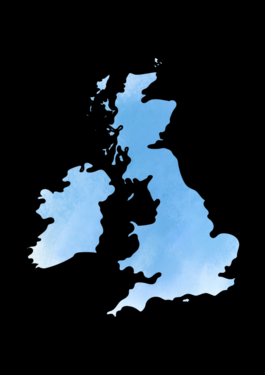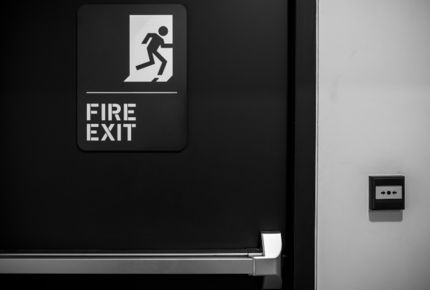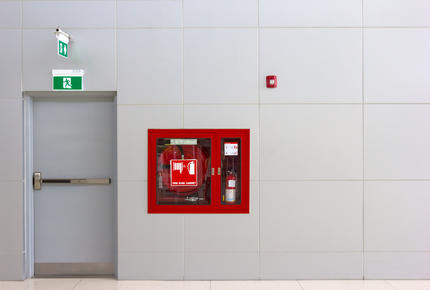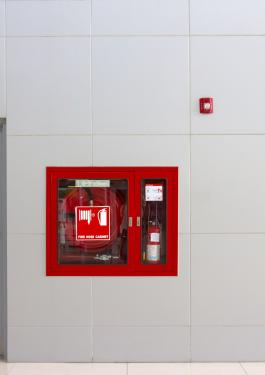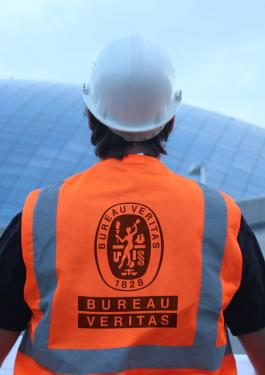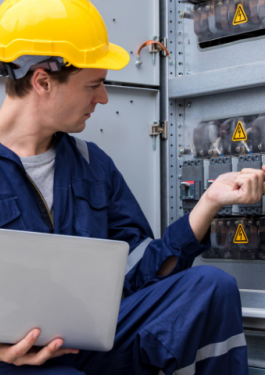EMERGENCY LIGHTING INSPECTION
Emergency lighting – backup lighting that operates in the event of a power failure – is required in business premises under Building Regulations and fire safety legislation, providing light so that people can safely leave the building during a fire, power cut or other blackout.
In addition, emergency lighting systems must be designed, installed, tested and maintained in line with detailed guidance in the BS 5266-1 standard.
Bureau Veritas has a team of electrical safety experts operating nationwide to support you in meeting your emergency lighting obligations.
-
WHAT IS EMERGENCY LIGHTING?
When the power in a building fails, a fire breaks out or if there is another emergency, emergency lighting supports a safe evacuation of the premises and minimises any potential panic.
A well-lit exit route enables people to identify their means of escape and also helps first responders to reach their targets safely.
Emergency lighting is also required to comply with current standards of health and safety in the workplace, including fire safety.
-
HOW OFTEN SHOULD EMERGENCY LIGHTING BE TESTED?
BS 5266-1 states that a building must have adequate illumination to support escape and identify firefighting equipment (or any other fire safety equipment), and that it works correctly.
To ensure this, emergency lighting must be tested by a competent person.Monthly emergency lighting tests are recommended. This is a short functional test simulating failure of the mains power supply, to ensure all emergency lighting switches on and illuminates correctly. A record of all monthly tests must be kept, including any faults which should be reported to the responsible person to ensure that appropriate action can be taken.
In addition, Bureau Veritas offers annual tests where the primary lighting circuit is switched off and emergency lights left on to ensure that they remain lit and identify any defects. We do not drain batteries any further than 33% of the stated battery duration, unless necessary arrangements are made, to ensure that the building can be evacuated in the event of an incident after the test.
-
WHAT ARE THE TYPES OF EMERGENCY LIGHTING?
There are four main types of emergency lighting:
Escape route lighting: To identify and illuminate evacuation routes and obstacles, reducing the risk of panic in emergency situations such as a fire or security incident.
Open area lighting: Often referred to anti-panic lighting, this ensures there is sufficient lighting to enable building occupants to reach a place where an escape route can be identified. Open area lighting applies to floor areas larger than 60m².
High-risk task area lighting: Provides greater illumination to allow potentially dangerous processes to be shut down or stopped before a building evacuation, such as turning off major machinery equipment.
Standby lighting: Enables normal activities to continue in the building, depending on the use and occupancy of the premises. This is not a legal requirement.
-
WHAT DOES AN EMERGENCY LIGHTING INSPECTION INCLUDE?
Scope and review:
- Pre-inspection meeting with client to discuss scope, site conditions and any specific arrangements
- Review of previous inspection and testing reports to establish the extent and condition of equipment
- Review of any available maintenance records
External visual inspection:
- Thorough external visual inspection to observe condition and standard of maintenance
- Verify as far as practicable that there is no obvious damage, and the equipment is still appropriate for use
- Observe the condition and maintenance for areas including joints and connections, conductors, flexible cable, and cords, switching devices, protection against thermal effects, protection decisions, and enclosure and mechanical protection
- Check that correct entries are made in the logbook, that drawings are up to date and signage is correct and installed in the right places
- Check that luminaires and lamps are installed and correctly positioned
Report and evaluation:
- Generate a report with details of any defects and necessary remedial actions
- Closing meeting with client to go through all findings
WHAT ARE THE BENEFITS OF EMERGENCY LIGHTING INSPECTION?
- Ensure compliance and meet best practice guidelines to maintain safety
- Gain peace of mind that your equipment is in good working condition in the event of an emergency
- Reduce risk and drive cost savings through early identification of potential breakdowns
WHY CHOOSE BUREAU VERITAS FOR EMERGENCY LIGHTING INSPECTION?
Bureau Veritas offers an experienced team of electrical inspection engineers operating nationwide to deliver trusted inspections that fit around your business operations.
We work in partnership to meet best practice testing standards and ensure compliance, including non-invasive testing outside of business hours to minimise disruption.
OTHER FIRE SAFETY SERVICES FROM BUREAU VERITAS
With Bureau Veritas, you can also streamline fire safety services to improve safety and achieve compliance more efficiently.
Through trusted Fire Risk Assessments (FRAs) and fire door inspections, together with emergency lighting inspections, you can have confidence in a complete fire safety solution from Bureau Veritas.
